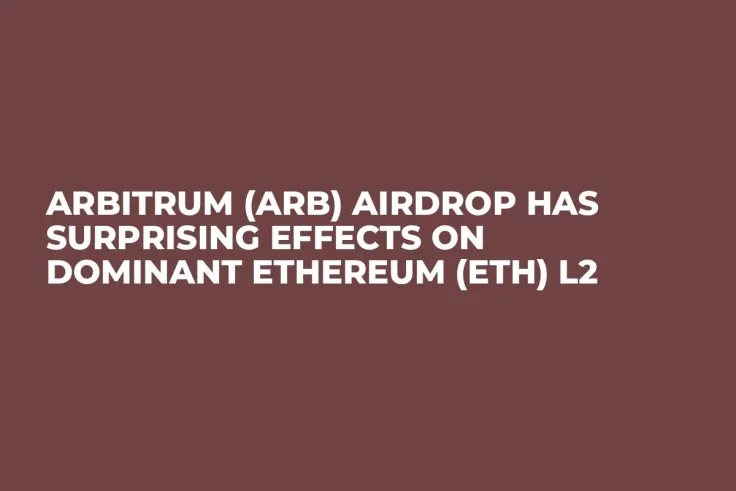
Typically, for the majority of blockchains, all metrics of on-chain activity and value transfer decline sharply after the dust settles post-airdrop. When the "tourists" and "airdrop hunters" are gone, they only mirror the actual utility of L1 or L2. Here's what the Arbitrum (ARB) case can tell us about these processes.
Arbitrum (ARB) network metrics rocketing following airdrop
All key metrics of Arbitrum (ARB) network usage - daily active user count, transaction number and net on-chain value - stabilized at levels higher than they used to be at before ARB token distribution in March. Such results were unveiled by analysts at Nansen on-chain data provider.
Arbitrum after the airdrop 👀
— Nansen 🧭 (@nansen_ai) June 14, 2023
Many projects have failed to sustain traction after their airdrop, however, initial data points to @arbitrum breaking that trend, with users and txs averaging higher now! pic.twitter.com/5t7yToYNo4
Gas spending data, together with Arbitrum-Ethereum bridge turnover, followed similar patterns. The last metric grows even amid the spiking popularity of competitor protocols zkSync and Starkware.
In this field, Arbitrum still retains the second position, being surpassed only by Polygon (MATIC), the largest EVM ecosystem blockchain.
As covered by U.Today previously, in May 2023, Arbitrum (ARB) also onboarded a Bitcoin-Ethereum interoperability solution called tBTC.
Airdrop hunters responsible for 5-6% of transactions on top L2s
Nansen experts also tracked the role of airdrop recepients in the ongoing activity on Arbitrum (ARB) and Optimism (OP), two of the largest L2s on Ethereum (ETH).
For them both, "airdrop hunters" are only responsible for 1 out of 20 transactions. As such, the vast majority of users are attracted by the long-term value proposition of the networks, not by the airdrop's benefits.
Arbitrum (ARB) remains the largest solution for Ethereum (ETH) scaling by total value locked in its protocols. As of mid-June 2023, it is responsible for almost 65% of the entire L2 ecosystem.
Its closest competitor, Optimism (OP), only accounts for 18.55%, L2Beat tracker says.

 Arman Shirinyan
Arman Shirinyan Alex Dovbnya
Alex Dovbnya Caroline Amosun
Caroline Amosun Godfrey Benjamin
Godfrey Benjamin